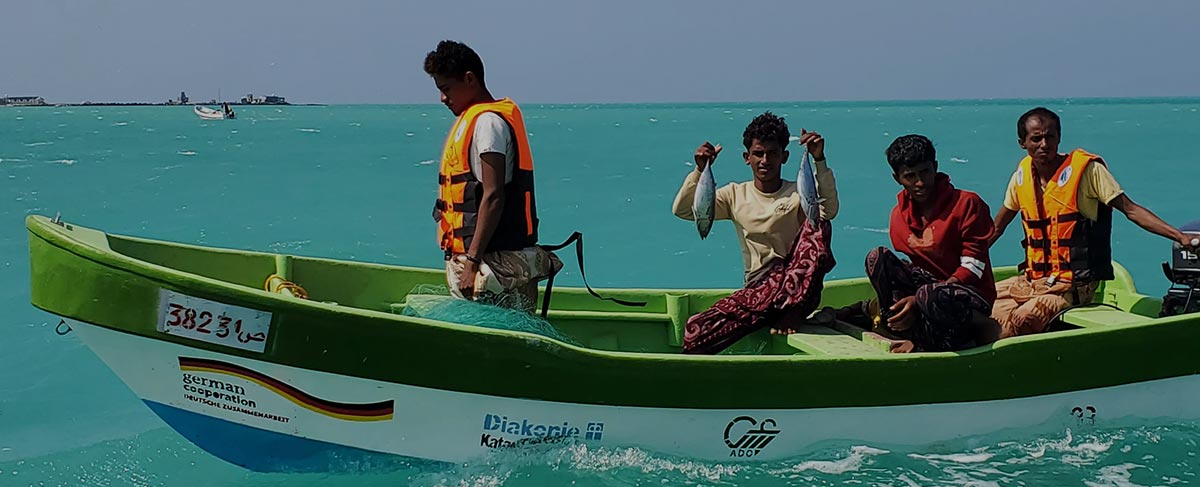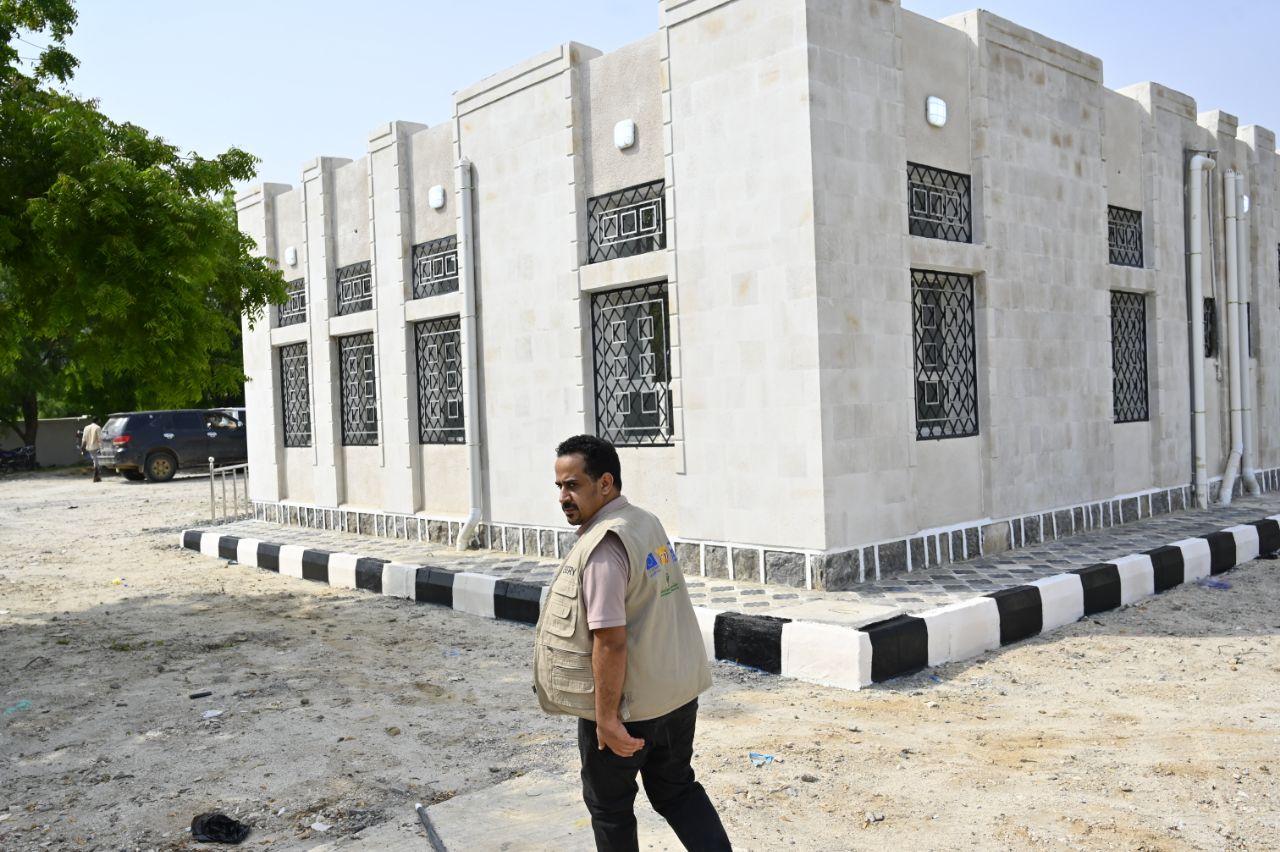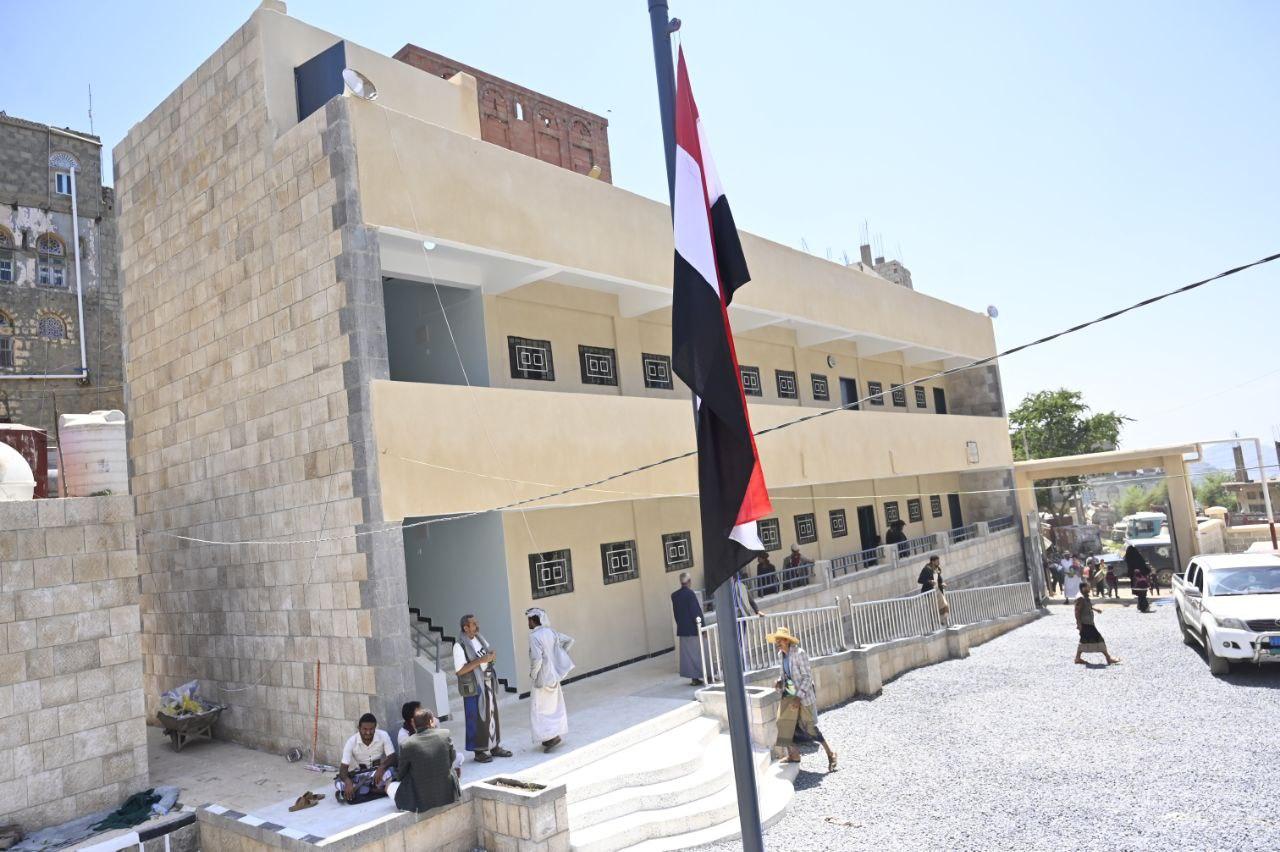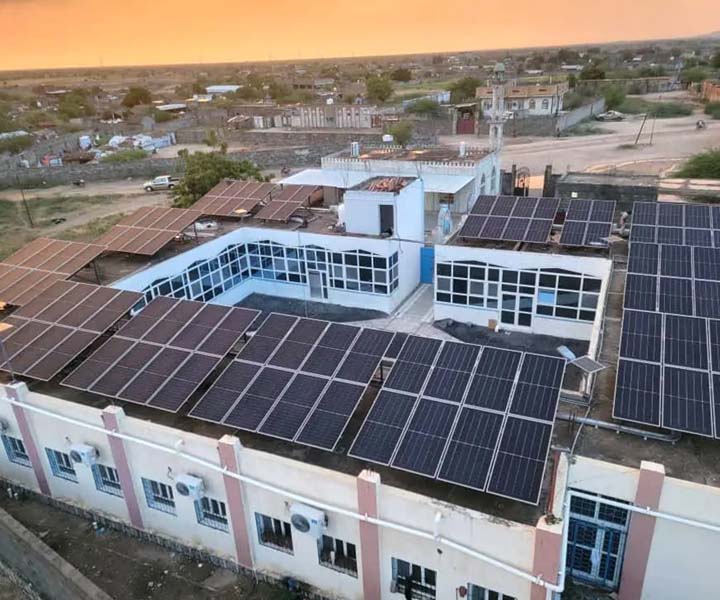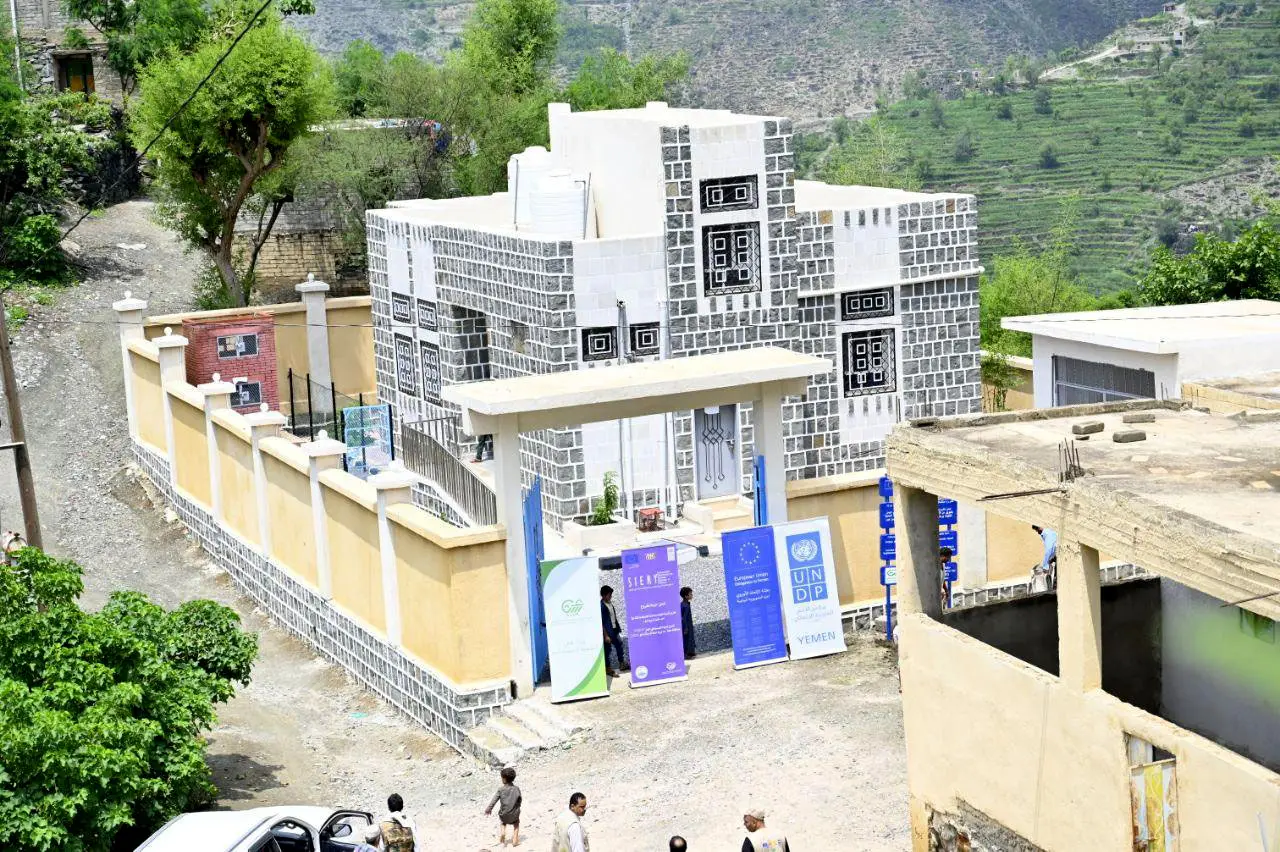Project to complete and rehabilitate the Al-Dhunuba Health Unit in Najrah District:
The health unit is located in Al-Dhunuba village, Al-Qaylah sub-district, Najrah district, Hajjah governorate, southwest of Hajjah city. The health unit can be reached via the road branching off from the Hajjah-Al-Aman road leading to Al-Qaylah sub-district. The road has some paved sections, but most of it is rough and mountainous.
The targeted health unit is one of five health units implemented by the local council in 2014, but all work was halted due to the conflict.The Al-Dhunuba Health Unit remained without completion, including its roof, wall, external room, and water tank. This situation has impacted residents, who suffer whenever they need healthcare, especially since the nearest health unit is 2.5 kilometers away on a very difficult road.
The building was not completed, constructed, or used until after interventions by the Abs Organization. It is a single-story building containing four rooms, a hall, and an engine room. It is planned to serve 20,500 individuals living in the area, according to the population density provided by the provincial health office.
The following interventions were implemented, benefiting 20,500 individuals:
Completion of the construction and rehabilitation of the health unit, the fence and its annexes, and the generator room.
Renovation work on the water collection tank for use as an underground water tank with a capacity of 47 cubic meters.
Provision of basic equipment and supplies for the health unit.
Establishment of a medical waste management area (incinerator and waste management tools).
Renovation and rehabilitation work on parts of the internal sewage network and treatment plant in Hajjah Governorate:
The internal sewage network for Hajjah city was implemented by a Chinese company in 1996 to serve the city of Hajjah at the time. However, with the rapid urban expansion and the significant expansion of residential areas established over the past two decades, the network has become unable to serve all population centers, as it is limited to specific areas.
This is despite the fact that the current main lines and treatment plants only have a capacity of 67%, according to the Local Water and Sanitation Corporation (the entity responsible for operating and managing the sewage network). The local council and the Social Fund subsequently implemented several network additions in an attempt to cover all new residential areas with sewer lines.
However, due to limited funding and financial capabilities, not all areas and residential communities in the city were accommodated. To identify priority areas, close coordination was undertaken with the local water and sanitation authority and its wastewater sector, and six priority areas were identified. A 905-meter-long wastewater network was rehabilitated, benefiting 165,000 beneficiaries. Treatment plants will also be rehabilitated, with the treatment process divided into two separate lines: a line for the Imhof tanks, and a line for biological filters in the first stage, two lines for biological filters in the second stage, and two lines for secondary filters.
The treatment process then proceeds to the filter channel and pond, and finally passes through the chlorination unit. The sludge accumulated in the secondary filters returns to the sludge chamber in the Imhof tank for digestion and stabilization with the primary sludge.
